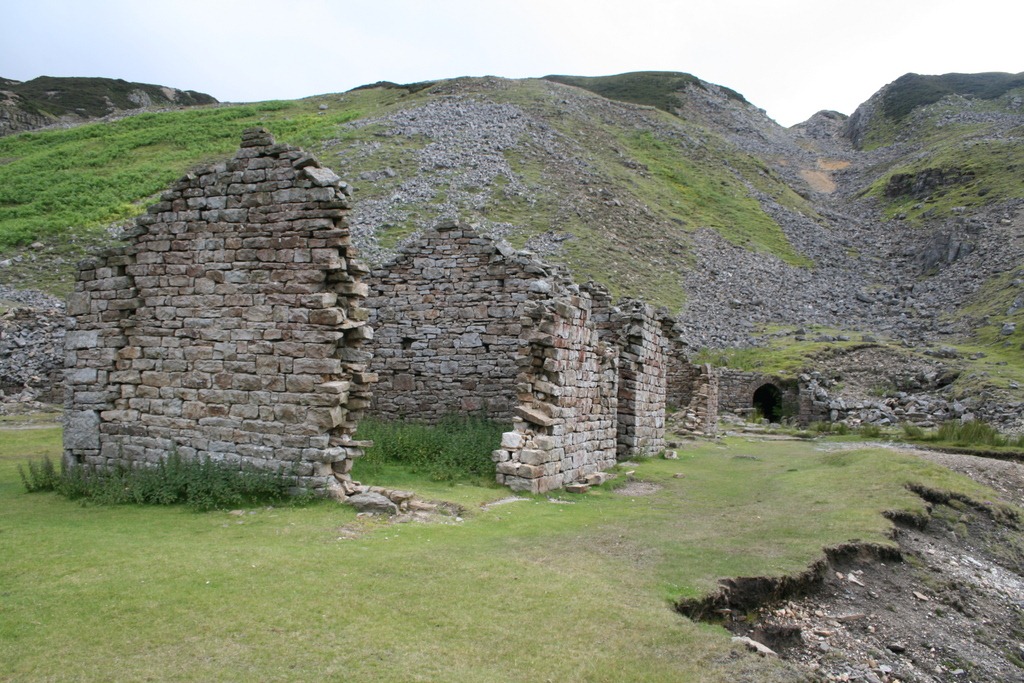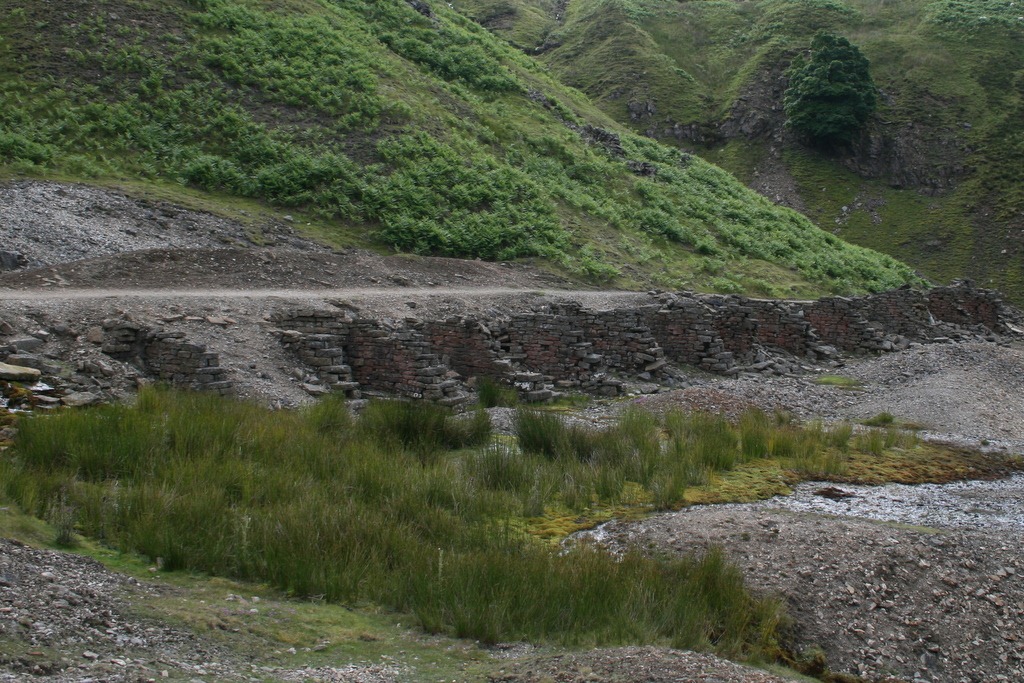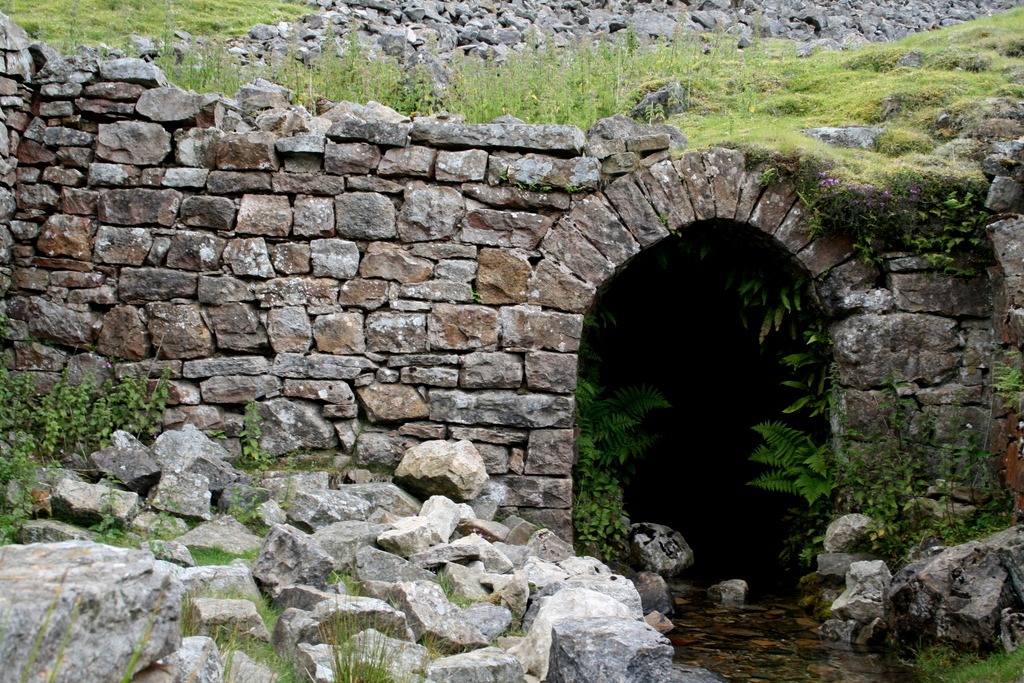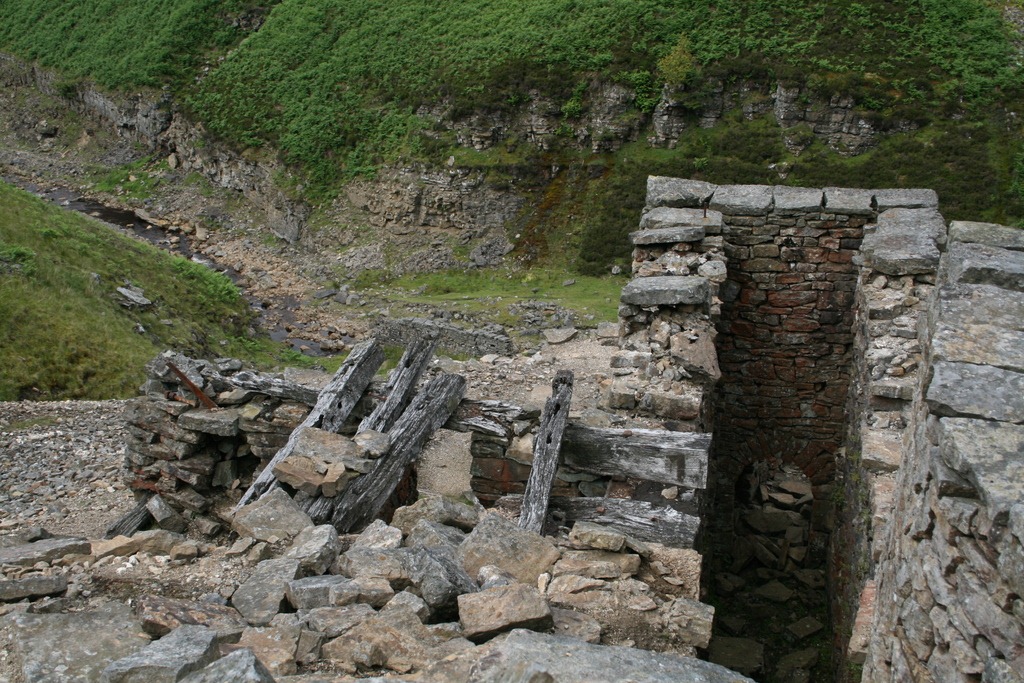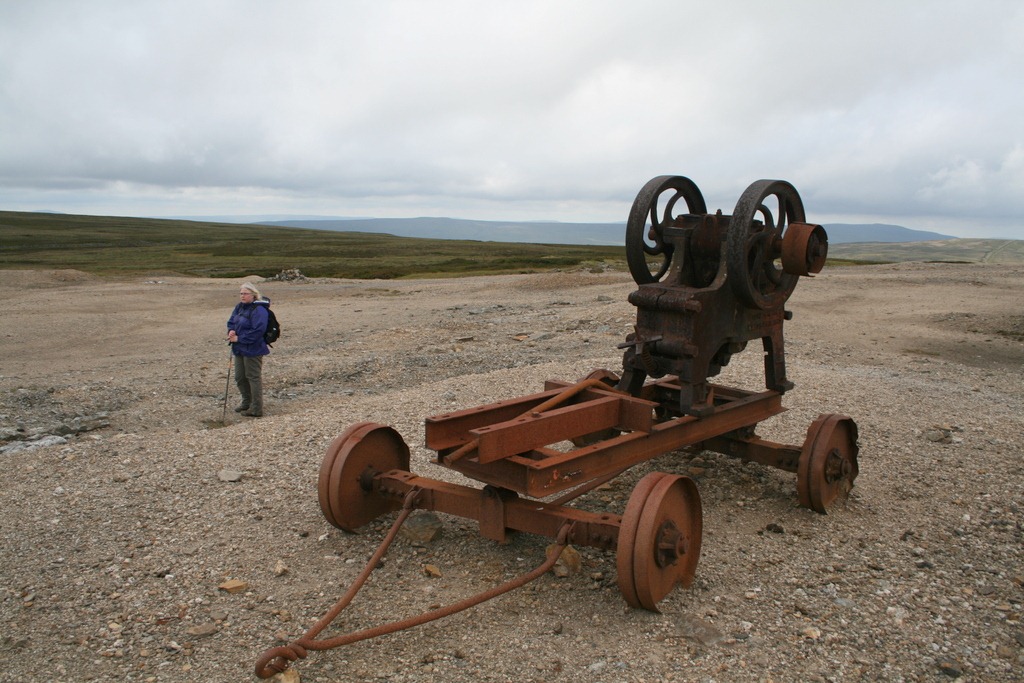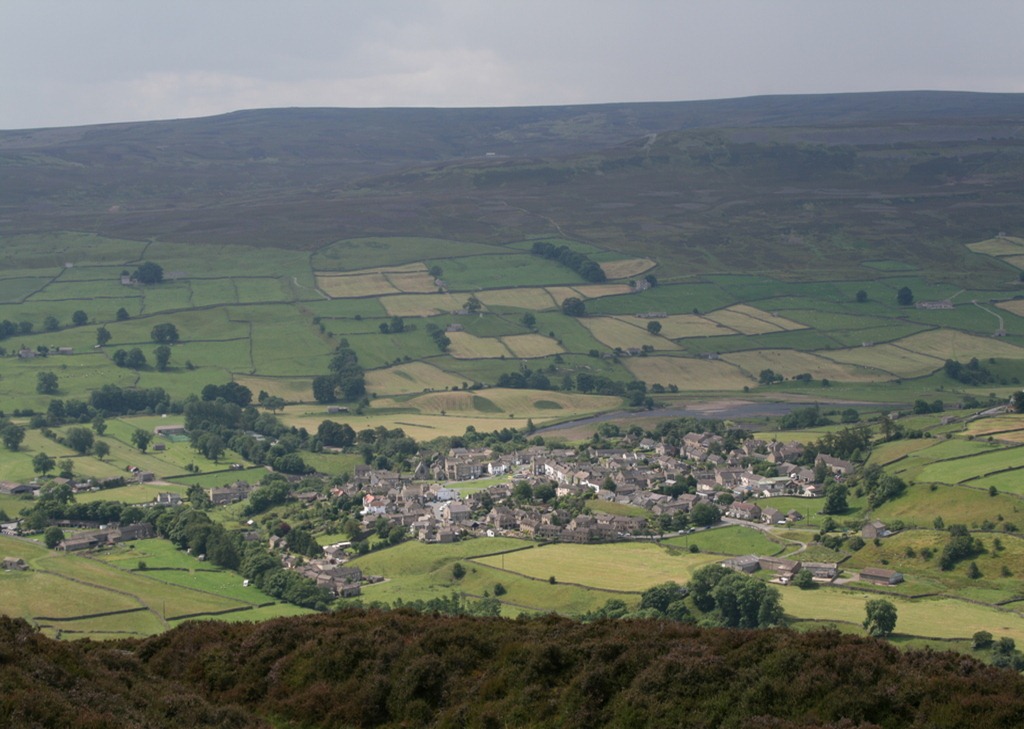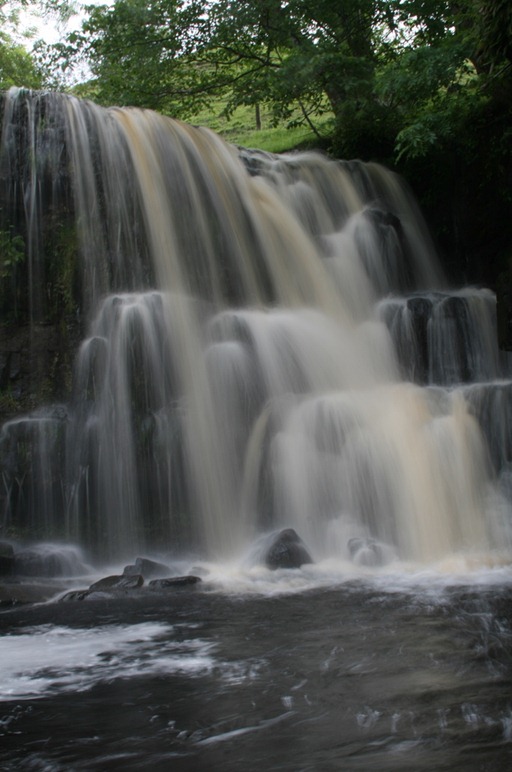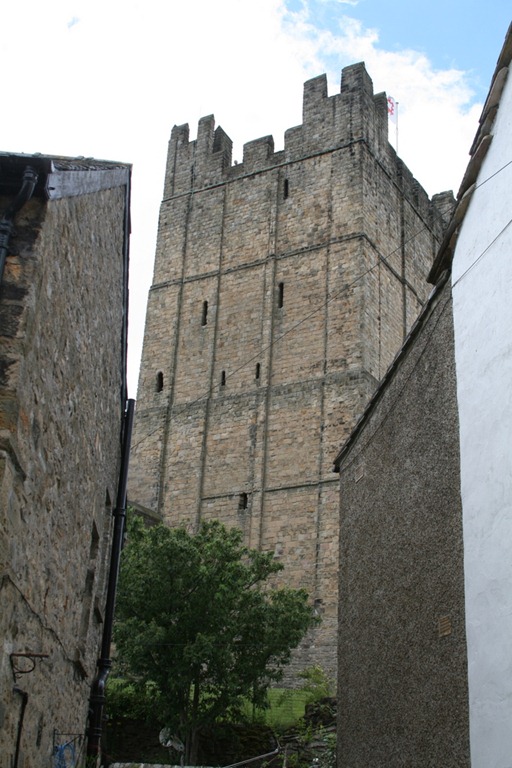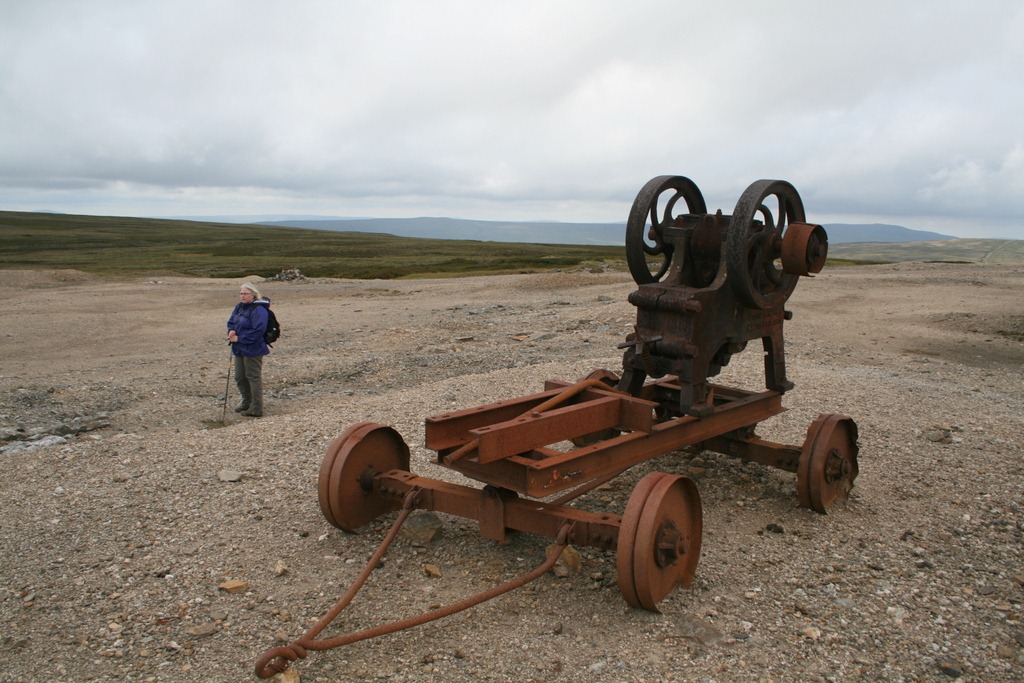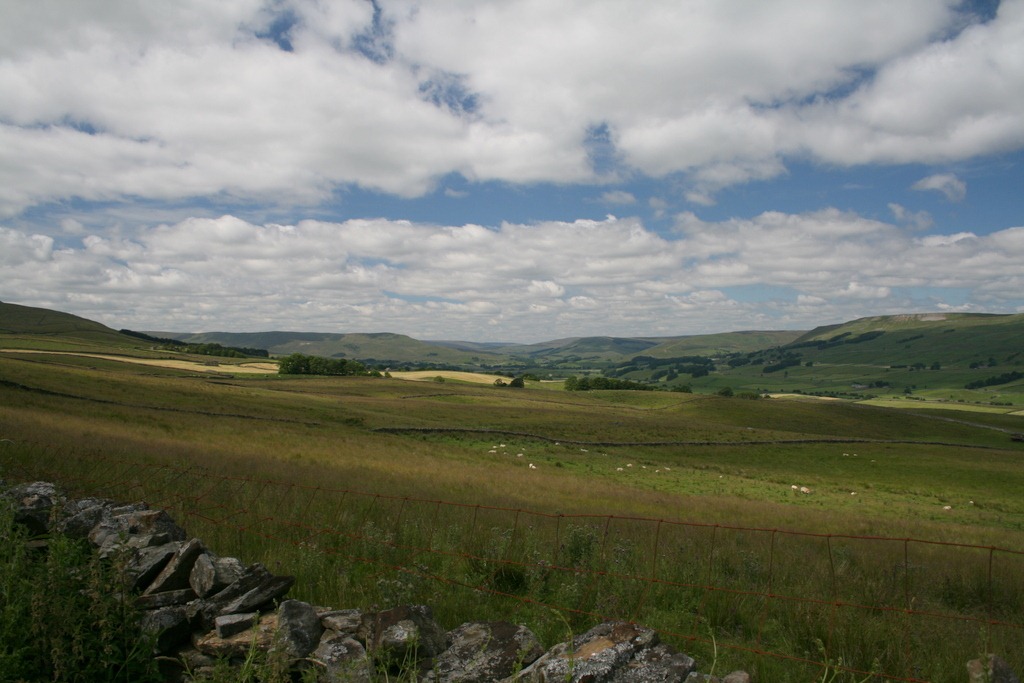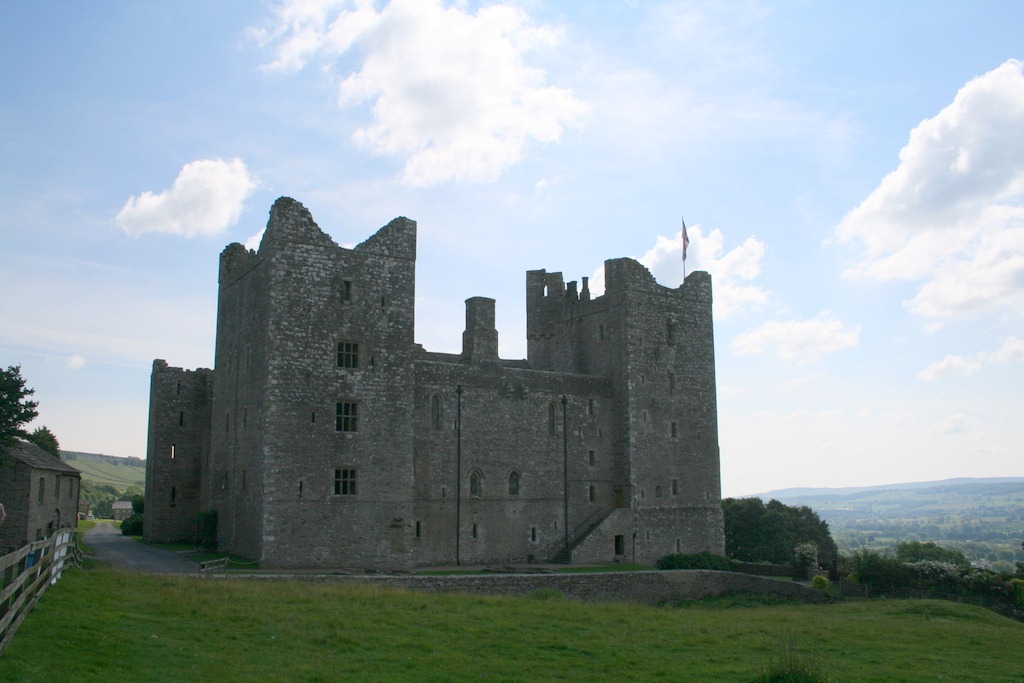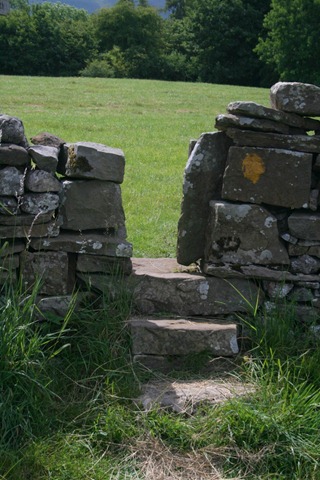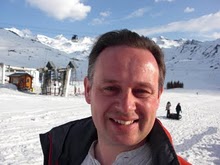Author's posts
Jul 16 2011
Lead mining in the Yorkshire Dales
On a recent trip to the Yorkshire Dales we came across the remnants of lead mining; as with many things in the field these are blank discoveries with no indication of what they mean at the site. A very long time ago I did an OA level in geology, and I seem to have inherited an interest in industrial archaeology, so I resolved to find out more…
The majority of the mine workings we saw were in Gunnerside Gill, which extends north from Swaledale shown on the map below. On the ground we found rock strewn gullies and heaps of gravel, still devoid of vegetation. There were also ruined mine buildings, the occasional opening into the hillside and the odd bit of rusting ironwork. The most distinctive elements of the remains are the “bouse teams”, these are sets of bunkers – just the dividing walls remain – which were used to store the ore (or bouse). Quite a few of the stone surfaces are covered in a reddish deposit; elsewhere this has been identified as a lichen, but I believe it’s lead oxide. The workings are named by the “level” or horizontal tunnel which they served, the photos here are taken around the Bunting (or Bunton) level.
Further down the Gill, closer to Gunnerside, are the Sir Francis Level workings; although these are less extensive at ground level, they turn out to have quite fantastic remains underground. Intrepid cavers have been down and taken some impressive photos, and you can read more about the Sir Francis Level workings in this report , here and here too. These were the most recent workings in Gunnerside Gill and were in operation from 1864 until 1891.
Lead mining has been carried out in the Yorkshire Dales since Roman times, the workings at Gunnerside Gill started in the 16th century but the majority of the visible surface remains are from the 19th century. The Bunting (or Bunton) level where the photos were taken was opened in 1802 and closed in 1898.
The Yorkshire Dales are substantially formed from limestone and gritstone outcrops laid down in the Carboniferous Period some 320 million years ago1. The lead ore occurs in veins which were deposited hydrothermally: hot pressurised liquids containing a range of minerals were forced through cracks in the native rock and deposited what they carried when the pressure and/or temperature dropped. The minerals are not conveniently deposited by type but mixed together. The veins are quite narrow – typically only a metre wide – but stretch deep underground.
This is reflected in the manner in which they are mined: initially vertical shafts were mined down to follow the veins. Later horizontal “levels” were mined to meet up with these vertical shafts which made the extraction of both ore and water easier – water will drain out of a level but puddle in the bottom of a shaft. In addition to this type of mining “hushing” was also used: this involves sluicing large quantities of water down the line of the vein to erode out the rock. This process was used in the Gunnerside Gill area from the 1780s to 1820s, and is what has left a large part of the surface remains. These are marked on the map as “hushes”. The extent of the workings can be seen quite clearly in Google Earth images (here).
The particular mineral in which the lead occurred is galena (lead sulphide), it is relatively dense and this property was used to separate out the galena from other minerals using a process akin to panning for gold. The ore containing rock is broken up into pieces and as far as possible the galena rich chunks are picked out and chipped off using hammers – this is known as dressing. This ore is then further broken up into smaller pieces. Earlier, this would have been done manually but later it was done using a water-powered mills, and still later it was done by steam-powered machines. These smaller pieces of ore are then buddled in troughs or hotching tubs – basically this simply means add water then shake, this separates out the material by density.
Once reasonably well-separated ore is obtained it is converted to metal in two chemical steps. First the ore is roasted to drive off the sulphur and convert it to lead oxide, then the oxide is smelted with carbon which removes the oxygen from the lead to produce the metal. There were smelting mills in Gunnerside Gill but ore was also transported underground to the next valley and smelted in the Old Gang Smelting Mills. We didn’t visit these but they had flues extending up the hillside a distance of hundreds of metres. The reason for this was two-fold: firstly, the gases driven off the ore during smelting were pretty noxious and secondly, the long flue allows soot to condense back out as it cools and this soot can be contain high concentrations of minerals.
Life for the miners sounds pretty grim; they were expected to work for 6 hours a day underground and the mine workings were often inaccessible without accommodation so their days may well have started with an hour or so walking simply to get to work. The Swaledale Museum, in Reeth, as well has having a great deal of other information on lead mining has some mining company rules, dated 1872. One of them states: “Children aged 12-16years only allowed to work 54 hours per week, or 10 hours per day.”
Footnotes
1. See p13-22 of this report by the North Yorkshire Geodiversity Partnership for more geology.
2. Related is this report on the Peak District Lead Mining Industry
3. English Heritage scheduled monument report
Jul 16 2011
Reeth
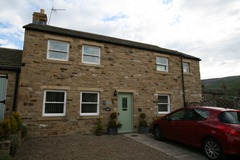 In a change from usual service we went to the Yorkshire Dales rather than the Lake District for our summer holiday, this is the land of my father – whose family lived, and still live for the most part around the southern edge of the Dales. We stayed in a cottage in Reeth (2, Nurse Cherry’s Cottages), recently built but in the old style. The advantage of this are that it’s spacious and the plumbing was not added as an afterthought. I think the cottage was advertised as sleeping up to four people, with two bathrooms and a downstairs toilet it would take 6 pretty comfortably. We are only two, so had plenty of room. We arrived in a downpour but for the rest of the week the weather was pretty good. Reeth is a small village which was once a centre for mining and farming but now is a centre for tourism – lying in the Yorkshire Dales and on the coast to coast path. It’s dominated by a large central green, although there are older buildings many are quite modern but built in the same style as the older, using the local stone.
In a change from usual service we went to the Yorkshire Dales rather than the Lake District for our summer holiday, this is the land of my father – whose family lived, and still live for the most part around the southern edge of the Dales. We stayed in a cottage in Reeth (2, Nurse Cherry’s Cottages), recently built but in the old style. The advantage of this are that it’s spacious and the plumbing was not added as an afterthought. I think the cottage was advertised as sleeping up to four people, with two bathrooms and a downstairs toilet it would take 6 pretty comfortably. We are only two, so had plenty of room. We arrived in a downpour but for the rest of the week the weather was pretty good. Reeth is a small village which was once a centre for mining and farming but now is a centre for tourism – lying in the Yorkshire Dales and on the coast to coast path. It’s dominated by a large central green, although there are older buildings many are quite modern but built in the same style as the older, using the local stone.
Day 1
A pleasant walk up Arkengarthdale to Langthwaite, and back along Fremington Edge Top. The walk outwards is through pasture and many narrow styles in stone walls with little gates to prevent sheep escaping. Shortly before Langthwaite there is a footbridge across the river which takes you to a short walk through woodland before climbing up through old lead mine workings up onto Fremington Edge Top. We took the route which avoided the hamlet of Booze, considering that it was so small that it was unlikely to have a good quality sign to picture ourselves besides. Nearby is Blea Barf, and at the top of the valley on the road over into Hawse is Lovely Seat, one can’t help thinking that when the Ordnance Survey visited the locals had some fun.
The walk along Fremington Edge Top is dead straight along the side of the wall. I wonder whether these walls date to the time of the old iron fence posts in the Lake District – perhaps relating to some Enclosures Act. The wall runs along the edge of wild moorland to the north and after a pleasant, if not a little windswept walk you drop back down towards Reeth.
Day 2
A route from The Green Book starting at Gunnerside, heading to Muker then up Upper Swaledale towards Keld and then back towards Muker via the Pennine Way and so along the river back to Gunnerside. Highpoints were the waterfalls at the foot of Swinner Gill and Kisdon Force. Photographers will know there is a knack to photographing waterfalls such that the water appears milky rather than frozen in time by a short exposure. The problem is this requires long exposures (about 1/2 second) and this is a bit tricky to do without a tripod – a handy rock or handrail must suffice instead. Crackpot Hall was also interesting, the term Hall is rather grandiose but the views down Swaledale were spectacular. Much birdlife to be seen including a greater spotted woodpecker, dipper, spotted flycatcher, grey wagtail, plover – no photos of these since that requires patience, speedy reactions and so forth. Lapwings all over the place.
Day 3
A more restful day today: we headed down to Harrogate and the RHS Harlow Carr garden. This is horticulture, so I’ll leave the details to The Inelegant Gardener. It’s a fairly lengthy drive down to Harrogate from Reeth – a little under an hour and a half. My abiding memory will be of coffee and Fat Rascal in Betty’s Tea Rooms, attached to the gardens but not providing a route in or out. After a morning at Harlow Carr we headed back home via Richmond: a rather smart little town on a steep hillside with a huge castle (and more waterfalls). The Market Square would be spectacular if it weren’t for a flotsam of cars which spoil any photo. Sharon and I both seem to suffer from a list which prevents the photography of buildings without post-processing. A balanced diet today of Fat Rascal, sausage roll and icecream, available from the icecream shop in Reeth a mere 100 yards from our door (via shortcut).
Day 4
Back to walking, this time one of my own devising. Starting from Gunnerside we headed up Gunnerside Beck until we reached the lead workings at Melbecks Moor. There a several sets of ruined buildings and mine tailings as you head up the valley. After climbing up through the surface workings we got onto the moor top where were visible grouse, grouse grit stations (where they can pick up grit for their gizzards) and grouse butts from where they can be shot at. You have to get pretty close to grouse before they break cover. Finally, we dropped down into the valley where we got a little lost (and quite badly nettled) trying to find the path through Rowleth Wood. Once on the path through the wood, which is narrow and overgrown, we were further nettled and as I write now a couple of hours later my legs are still tingling from the knees down.
After our walk we visited the Swaledale Museum, which although small was highly informative on the local mining industry – a subject I shall return to in another blog post.
Day 5
Over to Wensleydale for our walk today (from the Green Book), from Bainbridge up to Semer Water (a rare natural lake in the Dales) and then onwards and back via the Roman Road. The Roman Road was very straight, and as usual somewhat disappointing – it requires a great deal of imagination to call up the requisite Roman soldiers. The weather was rather better than yesterday which was overcast and prone to the odd shower; today it is a little cool out of the sun.
Day 6
Final day, today we went back to Wensleydale for a walk from the Green Book starting at Aysgarth Falls and taking in Bolton Castle. The Falls are a bit of a disappointment, the approved viewing locations are a little distant from the falls and are rather confined. Richmond falls offer something similar, with slightly peaty-brown water cascading over flat slabs, but with much better access. Bolton Castle, on the other hand is rather impressive, visible on the valley side for many miles it is a solid, square chunk of masonry. It was built for Richard de Scrope in 1379, and is quite substantially intact.
The Yorkshire Dales are quite different from the Lake District: the peaks are less peaky, the valleys wider and more gentle, although the moors can be bleak when the wind blows and the clouds come down. There are also a lot of picturesque waterfalls, not in the style of the Lake District which tend to be frenzied plummets down ravines but cascades over broad rocky shelves. Villages like Hawes and Reeth can get quite busy as the day goes by but out walking we scarcely saw a soul. The stone walls are all pierced with small stone stiles, which have been the distinguishing feature of this holiday.
More photos here.
Jul 15 2011
Book review: “In defence of History” by R.J. Evans
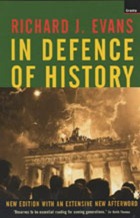 I’ve been interested in the history of science for some time, as a result of hanging around with historians on twitter I have been led to historiography – the study of history and its methods. This has brought me to "In Defence of History" by Richard J. Evans. It provides an opportunity to compare the ways of the historian with those of my area of science.
I’ve been interested in the history of science for some time, as a result of hanging around with historians on twitter I have been led to historiography – the study of history and its methods. This has brought me to "In Defence of History" by Richard J. Evans. It provides an opportunity to compare the ways of the historian with those of my area of science.
In his introduction Evans makes clear the book is a response to postmodernist criticism of historical practice. I was also amused to note that he cites a source as saying that historians were resistant to philosophising about their subject and criticism of their methods. As a scientist it sometimes feels as if other academic disciplines, such as philosophy and history, are on a crusade to "help" science with their criticism – this has never felt at all supportive or helpful. What this book makes clear is that one shouldn’t lump all such outsiders into one hostile blob!
It becomes clear through the book that postmodernism is not really a single thing. The core is the idea that all things are text, and that an external, objective world is less relevant – this idea originated with linguists and philosophers who were relatively unconcerned with the external world. As a somewhat hostile outsider Evans probably does not provide the best introduction to postmodernism, although he does acknowledge that ideas from postmodernism have been useful in the study of history and historical study.
As a by-product of this defence Evans gives a clear survey of what history is and what it claims to do.
The book begins with a history of history: raising first pre-modern styles of history, such as the chronicle and the morality tale of Gibbon’s "Decline and Fall of the Roman Empire". Leopold von Ranke is cited as the father of the modern method, that’s to say the inspection of contemporary documents in the historical record using them to identify causes for historical events and "facts". Here the distinction is made between the primary sources and secondary sources. For Ranke the key subject of history was politics, a view that held sway for many year but more recently has been receding. The key to the historical method therefore is hunting down original documentation and reading it with a mind to its original purpose and the context of other documents of that period with a care not to be caught out by changes in language and unspoken purposes.
Evans also identifies the crisis in history following the First World War, a stark reminder to historians that predicting the future was tricky although Evans does not sign up to the idea that history is at all about predicting the future. There’s an interesting parallel here between Toynbee’s "A study of history" which tried explicitly to make laws of history for predicting the future and Asimov’s Foundation series of novels, which are based on precisely this idea. Predicting future events sets a high barrier for successful prediction, some fields of science face similar challenges such as in seismology – we can say an awful lot about earthquakes but exactly where and when are not amongst the things we can say. For these fields it’s typical to talk about the probabilities of events and the statistics of large numbers of events.
One thing that struck me was the statement that history was a scientific, imaginative and literary exercise, the first two are things that a scientist would sign up to for their own field immediately, but literary? For sciences such as the one I trained in, physics, students are scarcely asked to string words together. Exam questions are largely a case of putting a sequence of calculations together. My own writing is a reflection of this lack of training.
At one point Evans spends time trying to motivate the idea that history is a science, this seems to me an empty discussion – once you’ve decided whether or not history is a science what are you going to do? Put on a labcoat?
Since Ranke’s time history has diversified immensely with the increasing focus on non-political history such as social history and an appreciation of a wider range of themes , I find this liberating since my interest in history is primarily in "people like me", therefore social and scientific, rather than political.
In contrast to any scientific research I know the political beliefs, defined broadly to include race, gender and sexuality, have a strong bearing on historical research with fields driven to support currently political agendas and the political leanings of the researcher a subject of comment. The same goes for nationality with many European historians focused very much on their own nations and with a distorted view of their importance. It’s very difficult to find parallels in scientific research, to stretch a point you can perhaps look at genetic and brain imaging studies of homosexuality. There is a degree to which there exist national styles of scientific research which have varied with place and time but this research driven by the political agendas of the researcher feels alien to a scientist.
When doing battle with the postmodernists the work of a scientist is easier than that of a historian, since ultimately the usefulness of science is measured by tangible outputs, by impact. If postmodernism increases tangible outputs then it is welcomed into the fold, if it doesn’t (and I don’t believe it does) then it isn’t. Science is tied down by reality which is always there for a return visit, with new methods, in case of dispute. History on the other hand is always flowing past, with no chance of return.
An interesting note on style is the forthright criticism of other historians through the book, and also in the afterword where he addresses his critics in detail and at length. This type of writing is rarely seen in science, that’s not to say the thoughts do not exist just that such discussions are left to the bar, or other informal locations.
I found this book immensely thought provoking because it describes the inner workings of history from the point of view of a practioner, making a striking contrast with my own workings as a scientist.
Jul 06 2011
The Two Cultures
It feels that there are two cultures growing up in the world of work, that of the public and the private sectors. If you believe reports in the news, public sector workers have gold-plated pensions and vast salaries for which they do very little, and the private sector is filled with the venial moneygrabbers who can provide no service to the public, and are actively intent on harming them.
I worked in the almost-public university sector, and now in the private sector – albeit in a very large company. The similarities are quite striking: both are subjected to continual change as the result of the appointment of a new ruling clique, and often operate in Byzantine bureaucratic systems.
These days, in the private sector, my tenure is clearly not secure and never has been, despite continuing success the number of people employed in my company has decreased by over a half since 2000. I receive a bonus, or variable-pay, it is variable and it is not pensionable.
Last week many public sector workers were on strike over their pensions.
Comparisons with private sector pensions miss the point: in the public sector 90% of full-time workers have a pension, in the private sector only 43% of the full-time workforce have a pension [source]. The glib answer to this is that we should attempt to improve the pensions of all workers. However, we should understand why pensions are not a given in the private sector.
Consider the nature of the organisations involved: the UK government has been around for hundreds of years, and we can anticipate it will do so similarly for hundreds of years. It also has a good credit record, if we are owed money by the government there is a good chance that we’ll get because at any time the government has a sizeable tax base on which it can call. As employees of the government we can expect substantial job security. A pension plan based on 1/80ths of income accrued per year actually seems a plausible bet: you can still expect to serve a substantial fraction of that with one public employer. It’s not the same in the private sector.
For most companies 40 years is an unimaginable period of time, as it is for their employees. In 40 years many successful companies will have lived out their lives, only a few such as the one I belong to, last longer. In the recent past private pension funds have collapsed leaving their members with nothing. As a university lecturer I could quite reasonably look forward to being employed as a university lecturer for the rest of my working life. As an industrial research scientist my time horizon is about 5 years, and actually it is entirely plausible that we will all be called to a meeting tomorrow to discover that the site I work on is to be closed.
That’s the deal for big organisations, public and private but there is a third group: Have you tried to get a plumber, or similar skilled, self-employed worker recently? If you have you’ll have found that they’re remarkably available at the moment, that’s because they have no work and when they have no work they don’t get paid. The same is true for many small businesses and self-employed people. It’s not like my job, or any job in the public sector where there may be a pay freeze for for a few years. For these people recession and a drop in the GDP doesn’t just mean a pay freeze, it means a substantial drop in income – that’s what a drop in GDP is, it really means that a whole load of people are getting noticeably less than they did the previous year. The recent recession in the UK led to a drop in GDP of around 5%. The effects on me, in a big company, and those in the public sector are relatively small, so the impact on this other group are larger than the headline.
Meanwhile the company I work for is attempting changes to our pension scheme: a few years ago the final salary scheme was closed to new entrants, this year they have proposed to close the scheme for current members. The company’s stated policy is to go towards a defined contributions scheme, although that hasn’t happened yet. For people like me this means an expected loss in the value of their pension of around 20%. So, despite some misgivings as to the use to which they put their political fund (of which I will attempt to opt-out), I have joined the union.
Power to the people!
Jul 03 2011
Computational Photography
Lytro, Inc, a technology spin-off company founded by Ren Ng, have been in the news recently with their announcement of a re-focusable camera: take one “image”, and change where the focal plane lies after the fact. This is illustrated in the images above, generated from a single shot from the prototype camera. As you move from left to right across this sequence you can see the focus shifting from the front left of image to back right.I saw this work a few years ago at the mighty SIGGRAPH conference, it comes out of a relatively new field of “computational photography”.
All photography is computational to a degree. In the past the computation was done using lenses and chemicals, different chemical mixes and processing times led to different colour effects in the final image. Nowadays we can do things digitally, or in new combinations of physical and digital.
These days your digital camera will already be doing significant computation on any image. The CCD sensor in a camera is fundamentally a photon-counting device – it doesn’t know anything about colour. Colour is obtained by putting a Bayer mask over the sensor, a cunning array of red, green and blue filters. It requires computation to unravel the effect of this filter array to make a colour image. Your camera will also make a white balance correction to take account of lighting colour. Finally, the manufacturer may apply image sharpening and colour enhancement, since colour is a remarkably complex thing there are a range of choices about how to present measured colours. These days compact cameras often come with face recognition, a further level of computation.
The Lytro system works by placing a microlens array in the optical train, the prototype device (described here) used a 296×296 array of lenses focusing onto a 16 million pixel medium format CCD chip, just short 40mmx40mm in size. The array of microlenses means means that for each pixel on the sensor you can work out the direction in which it was travelling, rather than just where it landed. For this reason this type of photography is sometimes called 4D or light-field photography. The 4 dimensions are the 2 dimensions locating where on the sensor the photon lands, and the direction in which it travels, described by another two dimensions. Once you have this truckload of data you can start doing neat tricks, such as changing the aperture and focal position of the displayed image, you can even shift the image viewpoint.
As well as refocusing there are also potentially benefits in being able to take images before accurate autofocus is achieved and then using computation to recover a focused image.
The work leading to Lytro was done by Ren Ng in Marc Levoy’s group at Stanford, home of the Stanford Multi-Camera Array: dispense with all that fiddly microlens stuff: just strap together 100 separate digital video cameras! This area can also result in terrible things being done to innocent cameras, for example in this work on deblurring images by fluttering the shutter, half a camera has been hacked off! Those involved have recognized this propensity and created the FrankenCamera.
Another example of computational photography is in high dynamic range imaging, normal digital images are acquired in a limited dynamic range: the ratio of the brightest thing they can show to the darkest thing they can show in a single image. The way around this is to take multiple images with different exposures and then combine together. This seems to lead, rather often, to some rather “over cooked” shots. However, this is a function of taste, fundamentally there is nothing wrong with this technique. The reason that such processing occurs is that although we can capture very high dynamic range images, displaying them is tricky so we have to look for techniques to squish the range down for viewing. There’s more on high dynamic range imaging here on the Cambridge in Colour website, which I recommend for good descriptions of all manner of things relating to photography.
I’m not sure whether the Lytro camera will be a commercial success. Users of mass market cameras are not typically using the type of depth-of-field effect shown at the top of the post (and repeated ad nauseum on the Lytro website). However, the system does offer other benefits, and it may be that ultimately it ends up in cameras without us really being aware of it. It’s possible Lytro will never make a camera, but instead license the technology to the big players like Canon, Panasonic or Nikon. As it stands we are part way through the journey from research demo to product.

